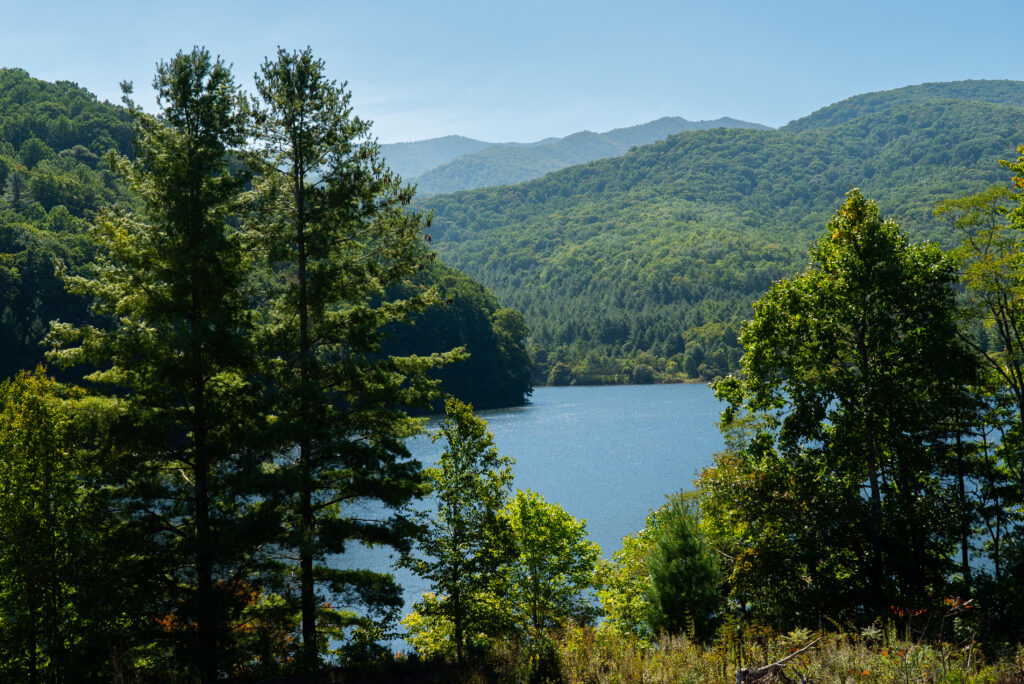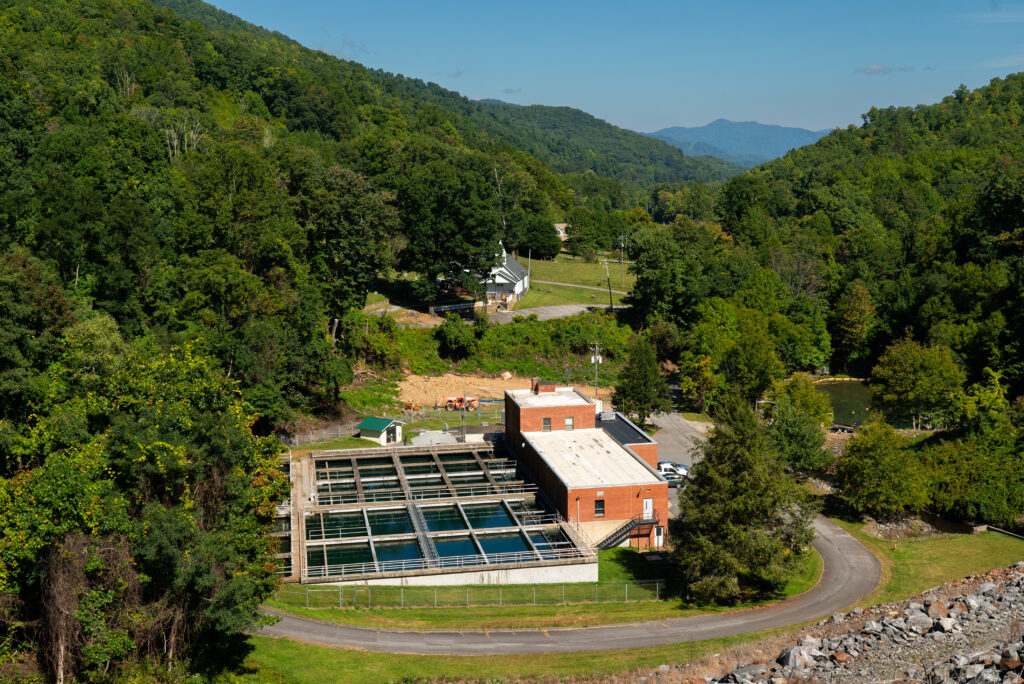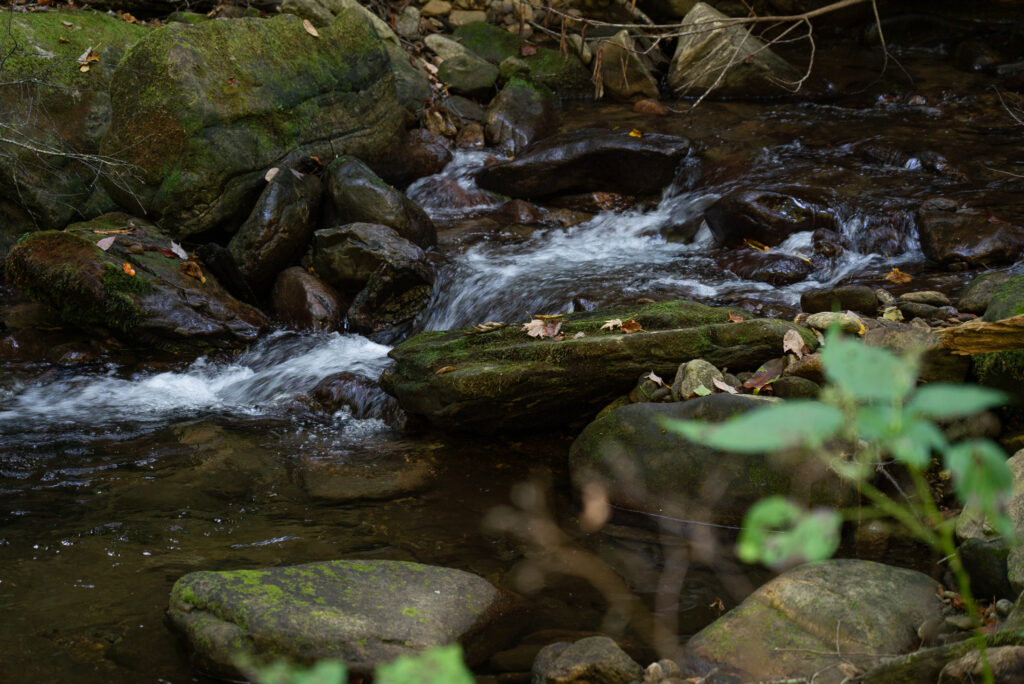Waynesville watershed is model for connecting natural land to drinking water quality
Lee Galloway knew what still needed to be done to protect his town’s drinking water supply.
Galloway, the Town Manager for Waynesville, a mountain town of about 10,000 people in Haywood County, had to figure out how to conserve the last big chunk of land that contains hundreds of creeks feeding the town’s reservoir. The 50-acre lake sits at the bottom of a bowl of towering, forested mountains. Galloway knew that every drop of rain that hit those mountainsides could reach the lake – his town’s drinking water supply.

More than a century ago, Waynesville’s leaders began buying properties within this watershed to ensure safe drinking water for the town’s residents. Their forward-thinking actions set a precedent. Most of the land in the watershed was bought during the first half of the 20th century, but a large section still remained in private hands. The problem for Galloway, however, was that this sizeable unprotected tract lay within the larger preserved area.
The Waynesville watershed comprises 8,030 acres of forest land, about the size of the Biltmore Estate to the north near Asheville. The fast-running headwaters that gurgle down every incline toward the reservoir are clear and cold. The trees are huge and wildlife is plentiful; the area contains two State-designated Natural Areas that house unique plant and animal communities. And the property provides breathtaking scenery along nearly 10 miles of the Blue Ridge Parkway.
To ensure the permanent protection of this amazing natural resource, Galloway turned to several organizations he thought could help. He talked with the Conservation Trust for North Carolina (CTNC), Southern Appalachian Highlands Conservancy (SAHC), Mainspring Conservation Trust, the NC Land and Water Fund, and Western Carolina University. The groups hatched a plan to provide stronger safeguards for the entire watershed, including the acquisition of a 691-acre privately owned tract within the watershed.
“We wanted to protect public health by keeping our drinking water supplies as clean as possible. At the same time, we wanted to support the local tourism economy by preserving the stunning views from the Blue Ridge Parkway,” Galloway says. “We came up with an agreement that enabled Waynesville to grow while still protecting the area’s ecological diversity, scenic views and primary source of clean, safe drinking water.”
During a sometimes arduous process, the project partners’ persistence and creativity enabled them to overcome numerous hurdles along the way to protecting the watershed. They secured grant funding from the State Division of Water Quality, NC Land and Water Fund, and the U.S. Environmental Protection Agency. They reviewed and revised dozens of drafts of two conservation agreements (easements) that addressed different areas within the watershed. The Town of Waynesville’s Board of Aldermen held public hearings and voted to approve the easements.

In 2005, after eight years of hard work by the partners, the Waynesville Watershed was permanently protected. Today, the Town owns all 8,030 acres. CTNC and SAHC jointly hold and manage a conservation agreement on 7,339 acres and the NC Land and Water Fund holds an easement on the 691-acre tract. Land trust staff visit the watershed every year to ensure the easements’ terms are being upheld. Shortly after consummation of the deal, the partners prepared a comprehensive biological inventory and forest management plan. Limited forest management is allowed on the larger tract, guided by the plan, while the smaller property is held under a “forever wild” easement. Public access is allowed from time to time on town-guided educational tours.
“We know that it’s far more cost-effective to keep drinking water supplies clean by safeguarding land within the watershed, rather than cleaning up polluted waters entering our reservoir,” Galloway said. “This project is a great example of public and private partners working together – persistently and cooperatively – to overcome obstacles and leverage their resources for the good of our citizens.”

Thanks to long-standing efforts to protect the streams and underground springs that feed the reservoir, the Waynesville Watershed has earned the highest quality ranking the state can assign a drinking water source. The forested, undeveloped land is also able to efficiently trap rainfall to gradually fill the reservoir, meaning the town’s water supply is particularly resilient to extended droughts as well as intense heavy rain events.

